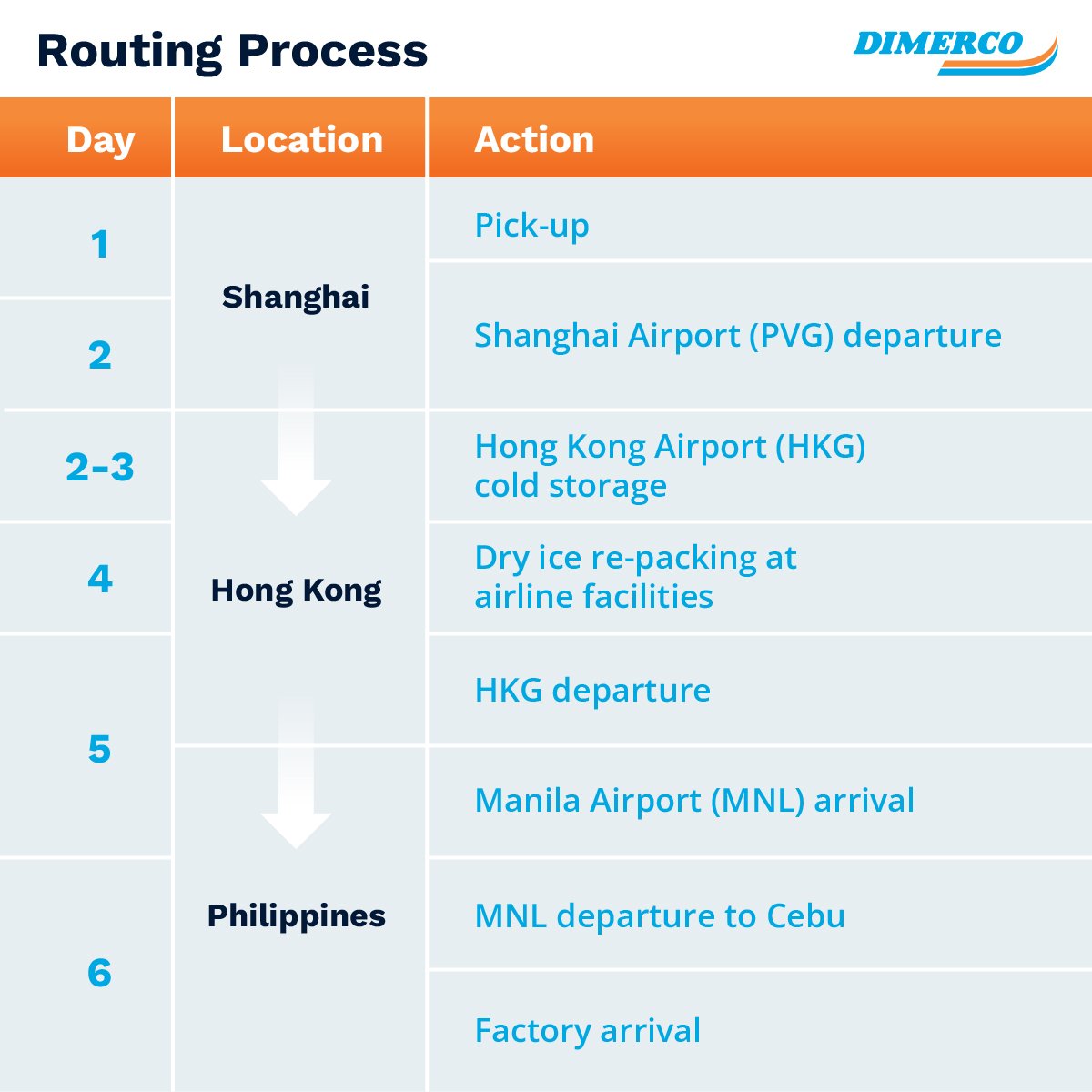Shipping dangerous goods by air is a significant challenge by itself. Throw in pandemic-related flight restrictions and a strict, in-transit temperature requirement of –18C and it created a serious situation that threatened to disrupt manufacturing operations for one of the world’s leading semiconductor parts manufacturers. Here’s how global forwarder Dimerco solved the problem.
Maintaining factory output despite disrupted supply lines
Pre-pandemic, this manufacturer was moving a critical raw material, classified as a dangerous good (DG), from Shanghai directly to one of its factories in Cebu – an island in the Philippines. But with pandemic-related flight restrictions, direct service was no longer possible. That meant switching to a multi-leg, multi-carrier solution for shipping dangerous goods by air.
Because the door-to-door lifespan of the cargo cooling agent, dry ice, is just 72 hours, the extended, multi-leg journey required re-packing the cargo with new dry ice during the journey. Some of the company’s freight forwarding partners failed to deliver the needed air freight capacity for DG and to maintain a –18C temperature from origin to final delivery.
Dimerco, which had worked with this company on other shipping projects, was asked to assist.
Solution for shipping dangerous goods by airfreight
For this difficult route, Dimerco determined that a Shanghai-to-Hong Kong-to-Manila-to-Cebu routing would be the fastest, most reliable route given the severely scaled-back flight schedules. And, since flights from Hong Kong to Manila were less frequent, Dimerco’s Hong Kong office had to pull cargo from the HKG air freight terminal and hire a professional DG company to re-pack the dry ice at a nearby airport facility. The cargo was then moved back to a cold storage room to sustain the required temperature until the next leg of the journey.
The diagram below shows the steps in the routing process.

On the final day, the dangerous goods moved from Hong Kong to Manila and then to the company’s facility in Cebu. Prior to arrival in the Philippines, Dimerco’s office in Manila pre-cleared import customs to ensure the fastest delivery once cargo arrived.
Since domestic flights were cancelled during the onset of the COVID pandemic, there were limited options for shipping dangerous goods by air from Manila to Cebu.
- Helicopter was the first option, but because the cargo contains a temperature recorder with a lithium battery, this option was out.
- Military C-130 cargo plane was the next option, but because of the volume of dry ice (more than 100 kilos), this was out, as well.
Ultimately, Dimerco arranged a charter flight with Philippine Airlines. To make the flight economical for all, Dimerco was able to identify another shipper to participate in the charter arrangement. The flight arrived in Cebu and was trucked to the factory in time to maintain production schedules.
As a result of the success of this challenging freight shipping project, Dimerco now handles more of the company’s dangerous goods cargo shipments from Singapore and Shanghai to Cebu, in addition to other general and project cargo.





